Is my setup fine?
That depends... You didn't mention it, but I'm assuming your lamp is rated for 12V and no more than 8A? If so, then the setup is fine, but you need more information to do this successfully.
connected to a pure resistive lamp
What do you actually mean by this? All bulbs and lamps are resistive, as are motors and refrigerators. (Yes, motors are inductors, but they are still resistive). A common lamp is technically an inductor, given it is a coil of wire; however, the coil is only there to increase the resistance and adds practically no reactance. Even still, lamps are non-ohmic, which is to say, the resistance is not constant with varying voltages.
You need to know the expected current draw of the lamp. This is important in choosing a shunt resistor value. It isn't necessary, but in this sort of specific design, it can be helpful.
Would 1 ohm resistor handle that much current?
First of all, the resistance metric has nothing to do with a resistor's ability to dissipate power. Resistors have power ratings - 1/4W is fairly common. If you knew the expected current usage of the lamp, you could anticipate the current flow through the resistor; however, you could also use the 8A max of the power supply as a worst case metric.
Secondly, when you measure current with a shunt resistance, the added resistance should be virtually zero. You are not trying to add any sort of load to the circuit, just monitor it. What if the lamp was drawing 4A, then you would have a 4V drop across the 1Ohm resistor! This also means the resistor would need to be rated for at least 16W! On top of this, the added resistance will affect the operation of the lamp as you are adding reducing the available voltage drop across the lamp, which will affect its own resistance and current consumption.
Typical shunt resistors are tiny - try something like 0.001 Ohms. Now, that same 4A load would equal a 0.004V drop and only 0.016W.
With a known resistance, you can calculate the current flow by measuring the voltage across the shunt resistor; however, to notice any meaningful changes in voltage drop across the shunt resistor, you will likely need to amplify that voltage. The power used to amplify the voltage should be external from your power source, or it will also affect the operation of the lamp circuit!
Lastly, you mention using a DAQ, but you have not specified what kind or any other information about it. This site will not recommend parts and tools to you, but people will offer you help in setting something up. There are specific devices with built in shunt resistors, some require custom external components. You have to know the specifications of things, you can't just plug and play bits and pieces of things and expect it to work.
